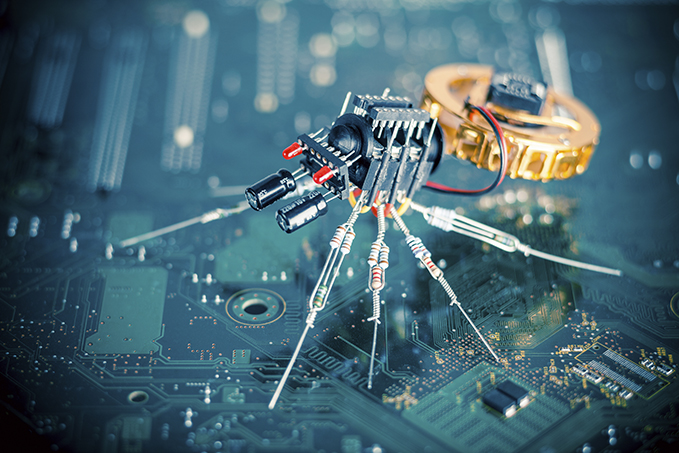
TechTalk: Nanotechnology – our world is going to get, really, really small…
I’ve been fascinated to learn about nanotechnology for my latest TechTalk blog – I have to give a special shout-out to my niece who has just completed a PhD on the subject! Let me share with you how I think this amazing field of tiny technology is increasingly going to influence our lives in a very big way…
Let’s start at the beginning. Nanotechnology is the study of the very small. And by small, I mean so tiny you can’t view it on a microscope. In terms of size – ‘nano’ means one billionth (or x10 to the power -9) – so a nanometer is one-billionth of a meter.
Putting that into perspective, a sheet of paper is 100,000 nanometers thick. Or, in a scale comparison, if the diameter of a marble were one nanometer wide, the whole earth would be one meter wide.
Another fun fact: your fingernails grow at around one nanometer per second.
Why bother researching something so small? Well the smaller something gets, the greater its surface area as a proportion to its volume. It means nanotech has a huge number of potential uses and applications.
While this is something that features in science fiction (think self-assembling machines out of nanomaterial into any design) the reality today is a lot closer to home, and we might not even realise it…
Nanotechnology is everywhere
At the moment nanotech has a large number of applications in energy and medicine. If you have greater surface area and lower volume it means the likes of solar cells, for instance, can become far more efficient.
Nanotech can also be used to make batteries stronger – great news for all of us smartphone users!
But nanotech can also be found in some of the consumer products we use everyday. Detergents, cleaning products, and even skin creams take advantage of nanotech at a certain level.
In the field of engineering , the discovery of graphene by Prof Andre Geim and Prof Kostya Novoselov at the University of Manchester in 2004 has been a major advancement. The discovery would win them the Nobel Prize in 2010.
Extremely tough, yet ultra light, the material is 200 times stronger than steel. Scientists and engineers are still coming up with new applications all the time, the most recent I saw was the use of graphene inside a microphone to improve sound quality.
Among the even more helpful is its use in aviation – making airplanes strong yet ultra light – thus reducing the amount of fuel and therefore making air travel greener and cheaper.
On top of that, nanorobotics is currently being used in medicine to target cancer cells.
The future: the internet of nanothings
The internet of things is something we’ve been talking about at Cisco for a number of years – it’s the idea of connecting everything to the internet and the huge benefits it can bring through data and insight.
But as things get smaller and smaller, nanotechnology in the future will herald a new frontier for this level of connectivity – and the internet of things will become the internet of nanothings (abbreviated to IoN, perhaps?).
Imagine having nanotechnology circulating around your body. You could embed nanotech into building materials for construction. Now think about then connecting these tiny ‘nanothings’ to the internet, and all the insights this will create.
Why? Picture how we are developing smart cities right now – you have traffic lights, building controls, cameras, wearables…
Placing nanosensors everywhere would give us a much more detailed picture of everything that’s going on at any given time. This almost unimaginable amount of data would allow humans to make better decisions, and optimise our lives to a level we haven’t thought of, yet.
This isn’t the stuff of science fiction. The advance of nanotechnology has been identified by the World Economic Forum has one of the technologies which will have a dramatic impact on humanity.
But with something so small, there are risks
The immediate issue that springs to mind around the internet of nanothings is privacy. If something is practically invisible owing to its size, how do you stop the government from putting nanospies on every corner, and in every room? What happens to all that data from the nanothings in your bloodstream?
This is a real risk and it has to be understood and controlled in some way.
Looking a bit closer to our timeline now, nanotech has risks on a more practical level.
How do you store and dispose of all these nanoparticle materials for instance? They are small enough to pierce cells so we need to regulate how they are handled with great care. This is particularly important given this is such a research-intensive field right now.
These are real dangers, but given the benefits this nanotech can bring we have to forge ahead and develop this new technology. It’s also exciting to think that our universe is going to get a whole lot bigger, by a technology that’s getting smaller!
Enjoyed this post? Check out my previous TechTalk posts here, where I look to explore a big technology trend or issue. Let me know your thoughts in the comments below!
Tags:



